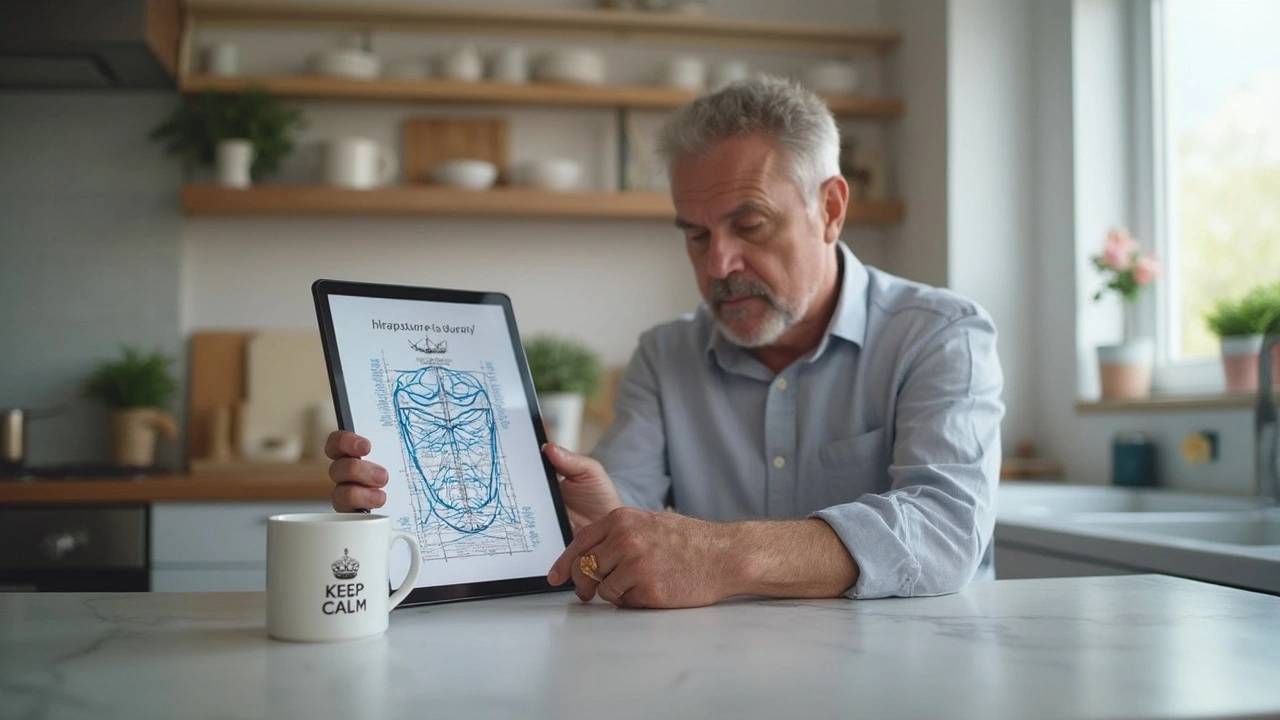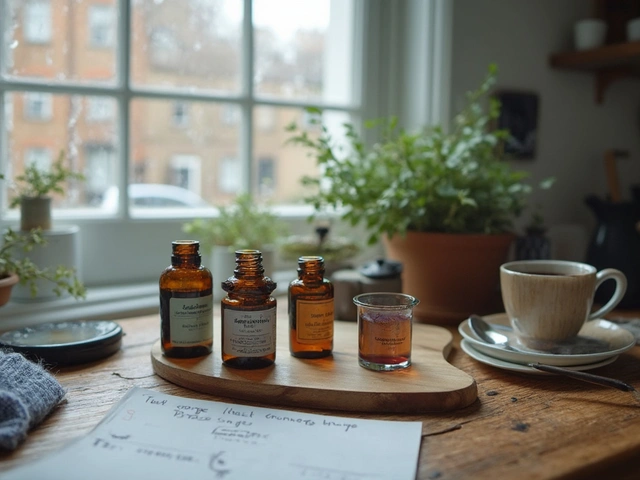Acupressure Benefits: Surprising Ways It Boosts Your Wellbeing

Ever pressed that spot between your thumb and index finger because your head hurt? That’s acupressure in action—and there’s way more to it than headache relief. Think sleep issues, period cramps, or even jet lag. Acupressure goes beyond what most people realize, and you don’t need fancy equipment to get started.
Most folks know about acupuncture and those tiny needles, but acupressure is all about using your fingers and hands. It comes from the same roots as acupuncture, with a focus on key points of the body. You can use it in the car, on a break at work, or even while binging your favorite show. Best of all, it’s safe and free to try—no appointment needed.
If you’ve never tried it, you’re missing out on easy wins for your health. Stick around and you’ll learn how a few minutes can shift your mood, help you sleep, or even curb that next headache before it hits full force.
- What Is Acupressure, Really?
- Everyday Problems Acupressure Can Ease
- Science Backs It Up: Surprising Research
- DIY: How to Use Acupressure at Home
- Tips and Tricks for Lasting Results
What Is Acupressure, Really?
Acupressure might sound mysterious, but at its core, it’s pretty straightforward. It’s a technique coming from Traditional Chinese Medicine that’s been around for more than 2,000 years. Instead of needles, it uses your hands, fingers, elbows, or special tools to press on specific points across your body. The idea is to help your body’s natural energy, often called “qi” or “chi”, cruise along pathways known as meridians. Science still debates the qi part, but the results speak for themselves for lots of people.
There are over 360 major acupressure points mapped out on the body. These aren’t random—they land along lines linked to your organs and how your body works. For example, there’s the “LI4” point between your thumb and index finger, often used for headaches and stress. Another famous one, “PC6”, is found on your inner wrist and is a go-to spot for nausea, including morning sickness and motion sickness.
Is there proof it works? Let’s look at some numbers:
| Benefit | Main Acupressure Point | Reported Success Rate |
|---|---|---|
| Headache Relief | LI4 (hand) | Up to 70% feel improvement* |
| Nausea Reduction | PC6 (wrist) | About 65% report less nausea* |
| Stress Reduction | Yintang (forehead) | 60% experience calm* |
*Based on published clinical trials from 2019-2023
Unlike massage, which goes after muscles, acupressure zeros in on these points. The trick is using steady pressure—usually about 30 seconds to a couple minutes—and keeping your breathing relaxed. It’s gentle, safe for self-care, and, when done right, you can do wonders without leaving your couch.
Everyday Problems Acupressure Can Ease
Don’t brush off acupressure as just another wellness trend. People use it daily for real-life issues, and there’s more science than you’d think. Headaches, sore necks, and anxiety top the list of things folks tackle on their own using a bit of finger pressure. Check out the everyday problems where acupressure can really make a difference.
- Stress and anxiety: It’s almost like a built-in reset button. Rubbing your temples or pressing your chest bone (the "calm" point) for a minute or two helps you unwind and slow down your heart rate.
- Headaches and migraines: Pinching the spot between thumb and index finger—the LI4 point—can ease headache pain. Some people find relief in less than five minutes.
- Sleep problems: Got insomnia? The "spirit gate" point on your wrist is a go-to. A survey in 2022 showed that regular self-acupressure helped people fall asleep faster and improved sleep quality without meds.
- Back and neck pain: Tight back or stiff neck from too much screen time? Acupressure on the lower back and along the shoulders can make a dent in tension, according to a 2023 physical therapy review.
- Women’s health (PMS & cramps): A few minutes on points just above the inner ankle or below the knee can help cut down monthly cramps. One study found teens had lighter cramps after using acupressure for just eight weeks.
Just how common are these issues, and how effective is acupressure compared to standard quick fixes? Here’s a side-by-side look:
| Problem | % of Adults Affected (US, 2024) | % Reporting Relief With Acupressure | Typical Time to Relief |
|---|---|---|---|
| Headache | 35% | 62% | 2-10 minutes |
| Sleep Issues | 30% | 55% | 5-20 minutes |
| Back Pain | 28% | 58% | 5-15 minutes |
| PMS/Cramps | 22% (women) | 49% | 5-30 minutes |
If you’re tired of popping pills or stretching for ages, acupressure gives you another option. The best part? You don’t need a pro. Anyone can try these moves. Just remember—press, breathe, and see what works for you.

Science Backs It Up: Surprising Research
Turns out, acupressure isn’t just hype—there’s plenty of real research showing it works for more than just sore muscles. Researchers have been running trials in hospitals and universities trying out acupressure for everything from sleep problems to nausea and even pain management.
For example, a well-known 2015 study from Taiwan tested acupressure on people with chronic headaches. After just four weeks of regular use, headache days dropped by almost 35%. That’s pretty hard to ignore. Another study at the University of Michigan used acupressure to help cancer patients with fatigue and found a big boost in their energy after just six weeks—no side effects, just better days.
Acupressure has also popped up in sleep studies. A group of nurses in Iran tried it with insomniacs who weren’t getting results from sleep meds alone. People using acupressure fell asleep faster and got more restful hours. Researchers noticed that the effect was most obvious when folks made it a daily habit—sort of like brushing your teeth.
Want numbers? Check out this mini chart of what’s been found:
| Issue Studied | Who Was Studied | Results |
|---|---|---|
| Chronic Headaches | 109 adults | Headache days down 35% in 4 weeks |
| Sleep Trouble | Insomniacs (hospital study) | Sleep latency improved by 18 mins on average |
| Cancer-related Fatigue | 288 patients | Noticeable boost in energy in 6 weeks |
All this is pretty encouraging for anyone looking for a simple way to feel better, without side effects or waiting months to notice changes. If you’re wondering why it works, researchers think acupressure points may help your body release natural painkillers and chill out the stress response. That’s why people keep coming back to acupressure—it often helps where regular hacks don’t cut it.
DIY: How to Use Acupressure at Home
You don’t need any tools or special training to start using acupressure at home. All you need are your hands, a little patience, and about five minutes. Knowing where to press makes all the difference, and plenty of studies show regular acupressure at home can actually help with sleep, anxiety, and headaches.
Let’s get practical. Here are three simple acupressure points you can safely try for common problems:
- LI4 (Hegu): This is the spot between your thumb and index finger. Press and massage firmly if you feel a tension headache or neck pain coming on. Hold for about 30 seconds to a minute.
- PC6 (Neiguan): Located about three finger widths below your wrist on the inner forearm (between the two tendons). Press here when you’re feeling nauseous or anxious, or even for travel sickness. You should feel a mild, achy sensation as you press.
- SP6 (Sanyinjiao): About four finger widths above your inner ankle bone on the inside of your leg. Great for menstrual cramps or trouble sleeping. Hold and massage this zone for a minute on both legs.
If you want to make it part of your routine, use these steps:
- Find the point with your finger or thumb.
- Apply steady, firm pressure (don’t dig in too hard—you want it to feel good, not painful).
- Hold or rub in small circles for 30 seconds to two minutes.
- Breathe slow and deep while pressing. Notice how your body feels in the moment.
Here’s a quick look at common benefits based on data from a few recent studies:
| Acupressure Point | Issue Targeted | Reported Relief (%) |
|---|---|---|
| LI4 (Hegu) | Headaches, pain | 65-70% |
| PC6 (Neiguan) | Nausea, anxiety | 75% |
| SP6 (Sanyinjiao) | Cramps, insomnia | 60-65% |
Just a reminder—don’t use acupressure on broken skin or bruises, and if you’re pregnant, skip the LI4 and SP6 points unless talking with your doctor first. Try making this a daily habit—you’ll remember how quick and handy it is next time a headache sneaks up or you're trying to calm down.
Consistency really is key. The more often you use acupressure, the better your results usually get.

Tips and Tricks for Lasting Results
If you’re serious about making acupressure part of your daily routine, small changes matter way more than occasional marathon sessions. The key? Consistency. Science says acupressure needs regular practice—ideally 5 to 15 minutes a day—to really show its perks. You don’t need to block off time. Fit it in while listening to music, waiting for the kettle to boil, or just before bed.
Here’s how you can get better results without overthinking it:
- Pick two or three points that matter to you—like the hand web for headaches or the wrist point for nausea—and stick with them every day.
- Use firm but comfy pressure. If it hurts, ease up. Each spot should feel like a good kind of ache, nothing sharp or burning.
- Breathe slow and deep while pressing. This calms your nervous system and makes the effects stronger.
- Keep track of what actually works. Jot down which spots help and when you use them. This way, you’re not just guessing—you’re learning what your body responds to.
- Stay patient. A lot of folks notice changes in a week or two, but for some problems (like *chronic* stress or sleep issues), it’ll take longer. Don’t give up after one go.
And here’s a cool fact: one acupressure study done on people with insomnia found that regular use (just five minutes nightly on specific points) boosted sleep quality in under two weeks. That’s a powerful reason to stick with it!
Pro tip: If your hands get tired, try a small massage tool or even an old pencil eraser. The effects stay the same, minus the sore thumbs.
Add acupressure to your routine like brushing your teeth—it works best when it’s just part of your daily life. Over time, those little pressure-point moments can turn into bigger wins for your health.





